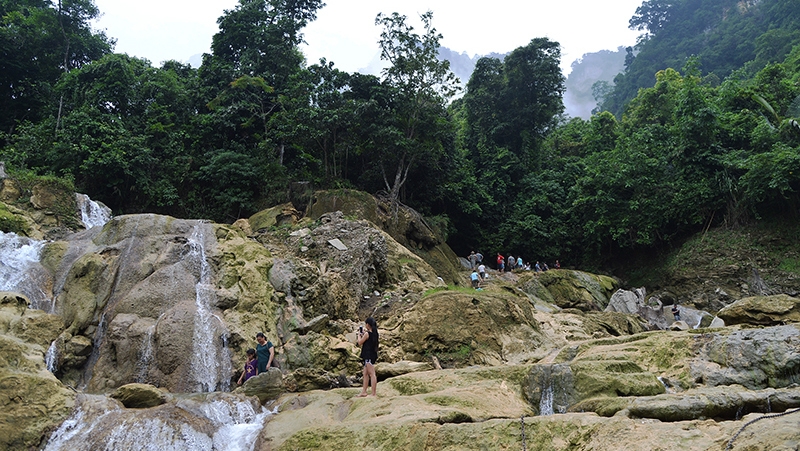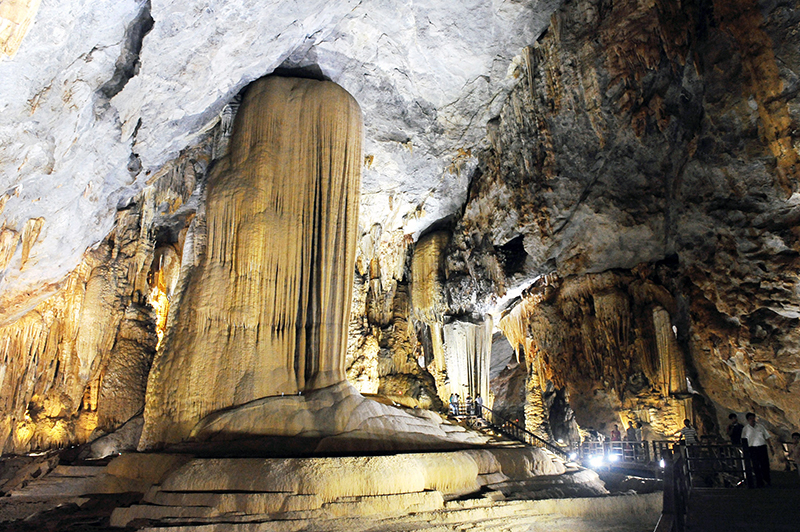
Khuoi Nhi waterfall in Lam Binh district is a tourist attraction in Tuyen Quang province. (Photo: Que Anh)
Vietnam is a country with very diverse and rich ecotourism resources including geological, topographic, climatic, hydrological, and endemic flora and fauna resources.
The country is home to about 21,000 species of plants and nearly 12,000 species of animals, including many endemic species and many included in the world Red List of Threatened Species.
Vietnam currently has 173 nature reserves, with a total area of more than 2.5 million hectares, including 33 national parks, 66 nature reserves, 18 species and habitat conservation areas and 56 landscape protection zones.
Vietnam is ranked 16th in the world for the diversity of biological resources and is among the 10 richest biodiversity centres in the world which are prioritised for global conservation.
Since the 90s of the 20th century, ecotourism in Vietnam has really been promoted in the forms of sightseeing tourism, research in national parks, expedition tourism, high mountain research, scuba diving tourism, caving tourism, and garden and river tourism in the Mekong Delta region.
Ecotourism not only enhances natural and ecological values but also makes an important contribution to socio-economic development, preserving indigenous cultural values and raising the awareness of domestic and foreign tourists about the responsibility to protect the natural environment.

Thien Duong cave ecotourism area (Phong Nha - Ke Bang National Park, Quang Binh province). Photo: Nguyen Duy
However, the “hot” ecotourism development has negatively impacted natural ecosystems such as destroying coral reefs, declining forest areas, causing habitat fragmentation, affecting habitat, feeding as well as the reproductive process of animal species. Some local people also illegally exploit endemic plant and animal species in national parks and reserves, threatening the extinction of species.
The lack of control over the development of the tourism industry's technical infrastructure system, the over-exploitation of natural resources, and the improper management of biodiversity conservation have negatively affected biodiversity while posing many challenges to the tourism sector.
Notably, the World Bank estimates that each year Vietnam loses at least nearly US$70 million in income from the tourism industry due to environmental pollution, plastic waste, and plastic bags that are threatening sea animals.
In order to develop ecotourism in association with biodiversity conservation, relevant agencies need to continue to perfect policies in the field while requiring those involved in tourism activities to strictly adhere to regulations on biodiversity conservation.
Specific tourism products should be built aligned with the conservation and promotion of the values of biodiversity while expanding tourism to buffer zones of national parks and protected areas to reduce negative impacts on ecosystems and biodiversity in core areas.
The response and participation of the local community is an important factor towards effective environmental protection. Therefore, it is necessary to connect the development of ecotourism with the development of the residential community, contributing to hunger eradication and poverty alleviation and creating stable jobs for local people participating in ecotourism on the spot.
Khanh Huy